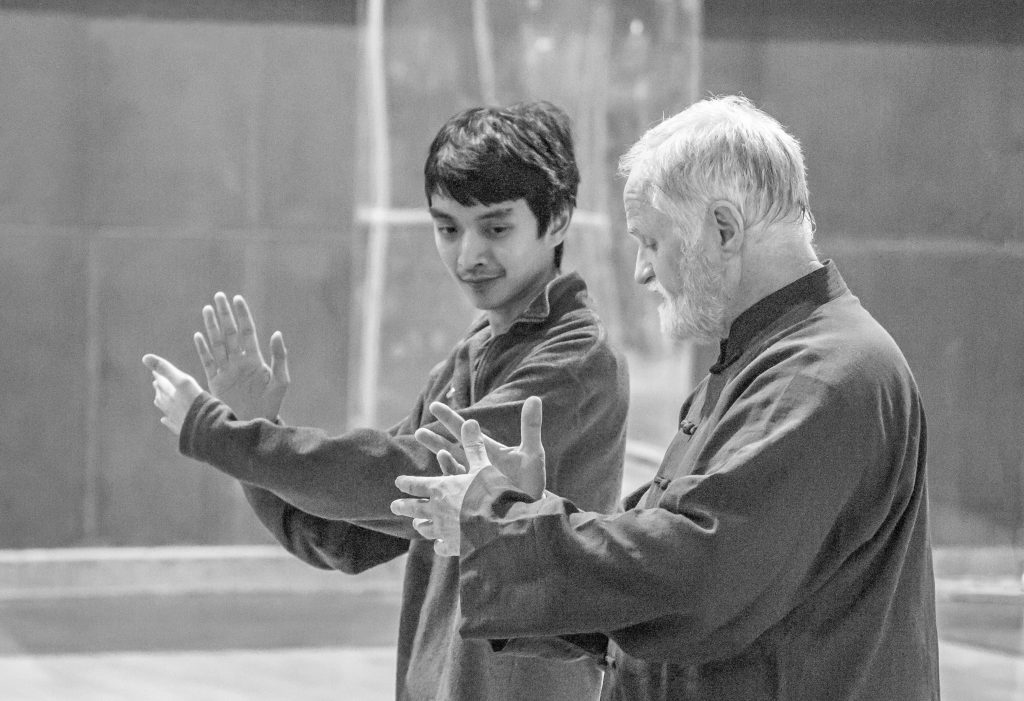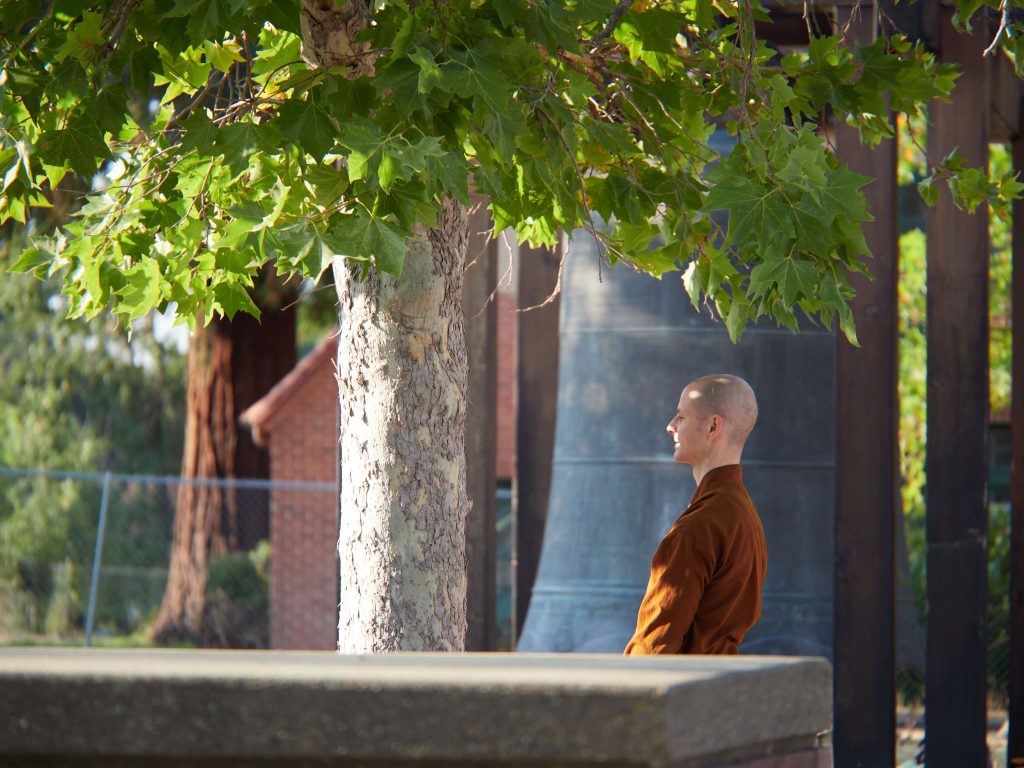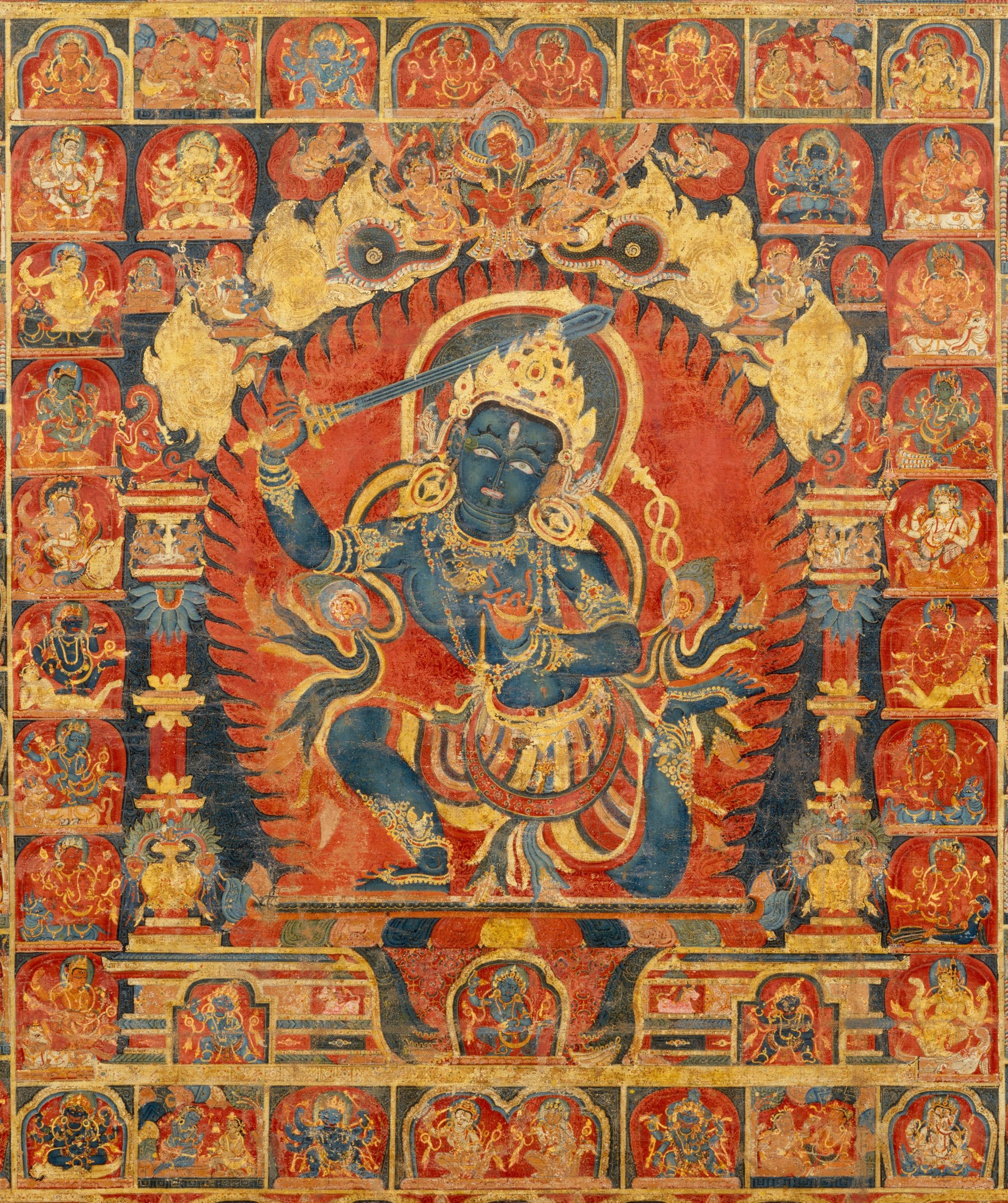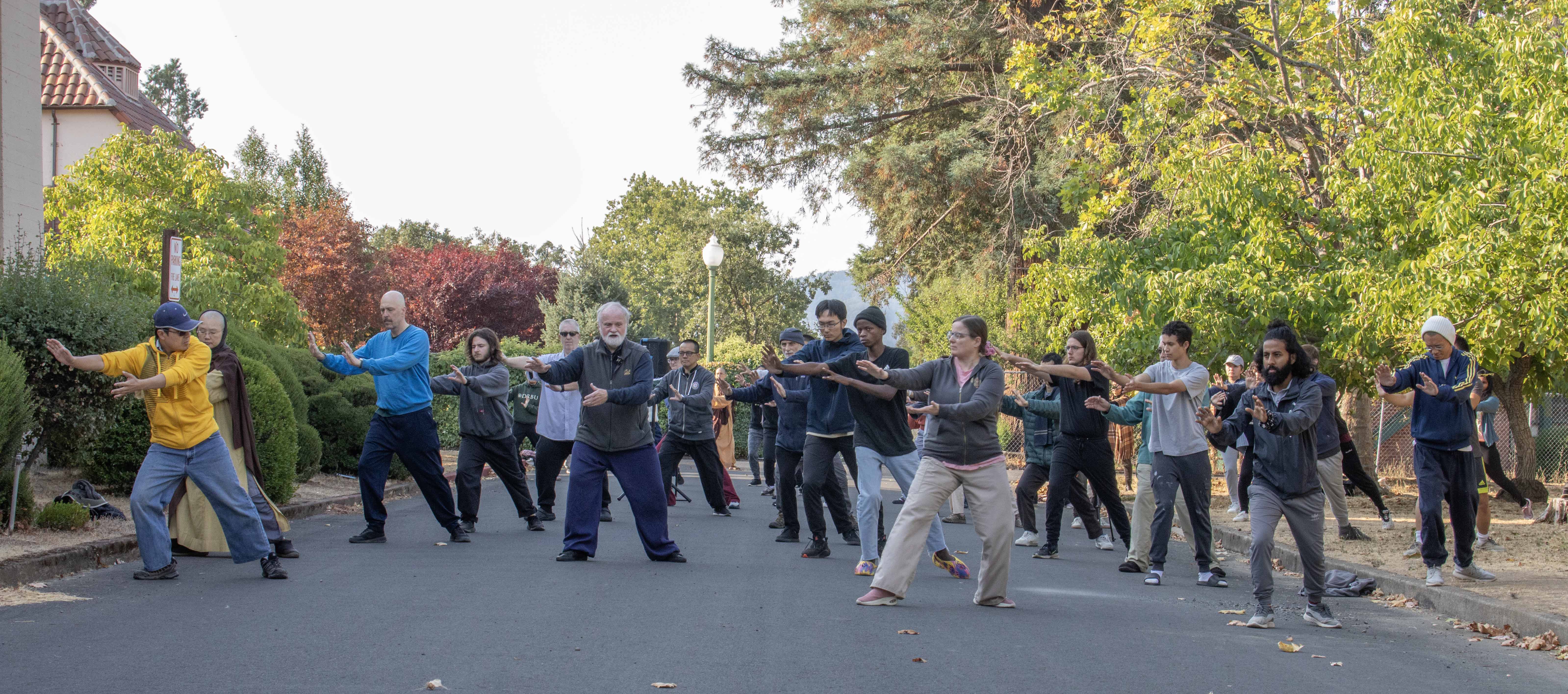
Below is an excerpt from a talk given by Professor Martin Verhoeven. He highlights the three aspects of Buddhist practice as ‘grounding, centering, and expanding’.
I’m trying to get into one of the things I think might serve as a unifying model for the campus, including not just our academic programs, but the overall experience that the students would have on a deeper level. This idea is called a triśikṣā, in Sanskrit. Basically, it’s the Chinese 三無漏學, the three non-outflow studies and/or three-fold learning.These three aspects are traditionally rendered as Sīla, Samādhi, and Prajñā.
I’m suggesting to go into this a little bit, by taking this out of its religious reification and seeing it instead as a psychodynamic methodology of inquiry and transformative learning that doesn’t have a time, place, culture, or even a creed. We would describe this idea as a highly effective, almost empirical laboratory-like process—a mechanism which is a term Doug [Powers] likes to use. I think it’s really appropriate here. It’s an active tool of inquiry; not a passive tenet or article of faith. Its proof, as they say, is “in the pudding.” Although you take it hypothetically, its ‘rightness’ is only determined by the outcome. Your attitude is both sincere and suspended. You think, “If this produces these results, it verifies that this is a useful tool.” And I’m suggesting this could be—if we found a way to reanimate and bring this to life—a very interesting template for DRBU.

I use Sīla as the grounding element. So you get away from the religious ‘should/should not’ and say, “This is what grounds. This is what anchors: the ethical orientation or sensibility.” Sometimes it is translated as virtue, or you could go even closer to integrity, or that ‘you are really who you seem to be and want to be.’ Clarity of conscience I like, as well, but these are modern uses of this idea to describe something that people gravitate to and feel dissonance when it’s not there. if you just say, “Sīla,” it doesn’t do anything; but if you unpack that term, and get into the psychological, emotive aspects of what’s involved, you could see why it’s called the ‘root of liberation’—and what it’s meant to be is exactly that. What it does is liberate one from the knots and glitches that come from insincerity, lack of integrity, moral drift, and compromising. So it’s really, in a sense, making a whole person with character stand.
I use Sīla as the grounding element. So you get away from the religious ‘should/should not’ and say, “This is what grounds. This is what anchors: the ethical orientation or sensibility.” Sometimes it is translated as virtue, or you could go even closer to integrity, or that ‘you are really who you seem to be and want to be.’
The Samādhi element takes us from grounding to centering. I like the idea of centering versus just meditation. It’s mental training, harnessing and coalescing, bringing together, unifying, and attending. It’s focusing. It’s clarifying. It’s an alert attending. When you talk about attending, a lot of our Contemplative Exercise Immersions (CEIs) and much of the classroom stuff has to do with bringing the mind to the present, bringing the mind to the acute observation of what’s going on immediately, both within and without; that sensitivity is something I could see to have a great outcome. I think it’s probably somewhere built into our learning outcomes. I don’t know specifically where that might be, but rather than content, what you have is a character issue. The Visuddhimagga (Path of Purification), an early Buddhist manual compiled in the 4th century by Buddhagosha, lists this as the Buddha’s “science”—an interrelated three-step exercise of ‘virtue, meditation, and insight.’ Though central to how Buddhists think about themselves and understand their tradition, this method is still the least explored and understood dimension of the Buddhist experience among Westerners. To seriously engage this methodology would be to study Buddhism from within its own tradition, or as [Thomas] Cleary calls it in his seminal essay in the Harvard Divinity Bulletin, from “a Buddhist paradigm derived from Buddhist sources.”
Finally, I think the part that’s translated as Wisdom, Prajñā, is wrongly understood to be some sort of abstract, mystical knowledge, something transcendental; it’s actually insight-opening. It’s expanding and discerning—clear and bright in the here and now. Also, this Prajñā or paññā is not an abstract thing you get, but it’s rather something you do, someone you become, someone who is active, functioning, engaged, and yet not self-centered or ego-heavy. Wisdom is the natural easy functioning growing out of the two previous elements. It is applied grounding (Sīla) and centering (Samādhi). Prajñā is essentially a human, not a divine thing. Ordinary people and sages, living beings, and Buddhas have the same quotient. It’s just used differently [by living beings and Buddhas], but [just because we have that potential, it doesn’t mean that we always use it wisely.]

I think this [formulation] is viable for two reasons. First, it is in the broad Buddhist tradition. Secondly, it opens up a modern existential tool of inquiry, of engaging the world that can be used anywhere at any time by any group. The Platform Sutra calls it “activating the wisdom essence of your original mind. . . living the life of Prajñā.” The eminent French philosopher, Pierre Hadot, insisted that this approach was at the heart as well of ancient philosophy where philosophy was a “way of life” and education “a living laboratory.” You wouldn’t necessarily have to believe in Buddhism to take this up and I think it could be used in Campus Life as a way of understanding that distinctive experience we’re going through here. It provides the rationale for why there’s sort of a harness gently placed on things, vs. putting on just following our immediate impulses, and instead asking us to examine how this is all playing out. A kind of paradox that Robert Frost points to: “Freedom is being easy in your harness.” This also is the essence of the term, the vimutti-rasa, the taste of freedom, the taste of liberation. It is one of the fruits mentioned as coming from the three [non-outflow studies] because it opens up the human potential in that way.
The students would be presented with an organic whole: study with practice, integrated, linking classroom, contemplative, intellectual, spiritual learning, social relationships, and everything in that ‘broad Buddhist tradition,’… When you reinvent it, reanimate it, humanize it, and expand it, it doesn’t seem to be like a religious body of doctrine. It seems to be something very modern, and psychodynamic, but it is still Buddhist-centered. It is a method of inquiry and transformative learning that has both radical freedom and radical responsibility at its core. It’s not just Buddhist-flavored. I think that’s important. We have to be careful to avoid merely imparting the flavoring of something that, after a while, becomes like junk food. There’s a lingering sense, and then it’s gone. Instead, we ask the students for two to four years, while they’re in the program, to sincerely and seriously try out this model of learning. We present the model of learning. We explain it the best we can and ask that while they’re in the program, they observe and immerse themselves on campus, in the dorms, and every place they go, in this unique transformative methodology that derives directly from its own sources and system, and ask them to consider if they would give themselves to that [while they are at DRBU.]


